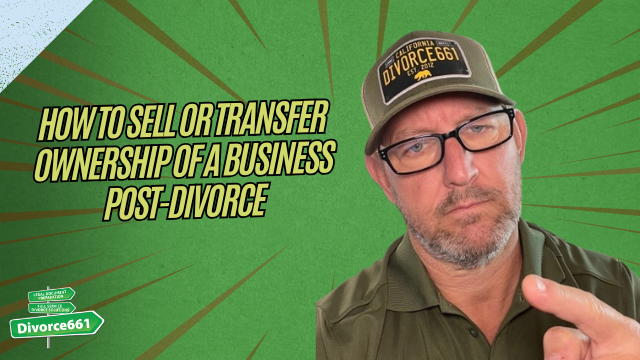How to Sell or Transfer Ownership of a Business Post-Divorce
Navigating the division of a business after divorce can be complex and emotionally charged. If you’re going through this process in California, understanding your options and the importance of professional guidance is crucial. In this article, we’ll explore how business ownership is handled post-divorce, the significance of a professional valuation, and practical strategies for dividing, selling, or transferring a business. This guidance is inspired by the expert insights of Tim Blankenship from Divorce661, who specializes in helping couples settle business matters fairly and legally.
Is Your Business Community Property?
In California, businesses started or acquired during marriage are often considered community property. This means both spouses have a stake in the business, regardless of who runs it day-to-day. Recognizing this shared ownership is the first step in ensuring a fair division.
Because the business is community property, simply deciding who keeps it or whether to sell it isn’t enough. You need a clear, professional valuation to understand the business’s worth. This valuation becomes the foundation for dividing assets equitably and avoiding disputes down the line.
The Importance of a Professional Business Valuation
Determining the value of a business post-divorce is not as straightforward as looking at bank statements or tax returns. A professional valuation expert considers many factors, including:
- Current market conditions
- Business profitability and assets
- Growth potential and liabilities
- Intangible assets such as goodwill or brand value
This expert valuation ensures both parties have a clear understanding of what the business is truly worth. It sets the stage for fair negotiations and helps prevent costly legal battles.
Options for Dividing Business Ownership
After valuation, there are several ways to handle business ownership post-divorce. The key options include:
- One Spouse Buys Out the Other: This is the most common scenario where one spouse retains the business by compensating the other.
- Sell the Business and Split the Proceeds: If neither wants to keep the business, selling it and dividing the sale amount is often the cleanest solution.
- Co-Ownership: Though rare, some ex-spouses agree to co-own the business. This requires a clear, legally binding agreement to manage operations and responsibilities.
Buyout Methods Explained
When one spouse buys out the other, there are different ways to structure the payment:
- Lump Sum Payment: Immediate payment in full. This offers closure and simplicity but requires the buyer to have sufficient funds.
- Structured Payments: Payments made over time, which can ease financial strain and provide flexibility.
- Property Trades or Other Asset Exchanges: Sometimes, the buyout involves trading other assets or property instead of cash.
Each method has pros and cons. Structured payments can be less stressful financially but require strong legal protections to ensure payments are made on time. Lump sums provide immediate resolution but aren’t always feasible.
Real Client Story: Structured Payout Success
One real case illustrates how careful structuring can protect both parties. A client’s ex-spouse kept the business but couldn’t afford a lump sum buyout. We worked together to create a payout schedule that allowed the buyer to pay over time.
Crucially, the agreement included legal protections ensuring future payments would be made. This gave both parties peace of mind—protecting the seller’s financial interests and allowing the buyer to maintain the business without immediate financial pressure.
The Role of Legal Protections
Legal safeguards are vital in any business division agreement. Without enforceable agreements, the risk of future disputes or missed payments increases significantly, compounding stress and financial uncertainty.
Well-drafted, legally binding agreements should outline:
- Payment schedules and amounts
- Consequences of missed payments
- Ownership rights and responsibilities during the payout period
- Dispute resolution mechanisms
These protections ensure that both parties’ interests are safeguarded and that the business settlement is clear, fair, and enforceable.
Why Work With Divorce661?
At Divorce661, we specialize in helping couples navigate the complexities of business ownership division during divorce. Our services include:
- Expert business valuations conducted by trusted professionals
- Drafting bulletproof, enforceable agreements tailored to your situation
- Flat-fee divorce services that cover business valuation and division
- 100% remote services throughout California for convenience and privacy
- Clear terms designed to prevent future disputes and protect your interests
Our goal is to make your business settlement as straightforward and legally sound as possible, so you can move forward confidently.
Conclusion: Protect Your Business Interests Post-Divorce
Dividing or transferring business ownership after divorce requires careful planning, professional valuation, and strong legal agreements. Whether you’re buying out your ex, selling the business, or considering co-ownership, having expert guidance is essential.
Don’t leave your financial future to chance. Secure your interests with clear, enforceable agreements that prevent disputes and provide peace of mind. If you’re facing business division in divorce, consider consulting with professionals who understand the unique challenges involved.
Ready to protect your business and move forward with confidence? Visit Divorce661.com for a free consultation and expert support tailored to your needs.

